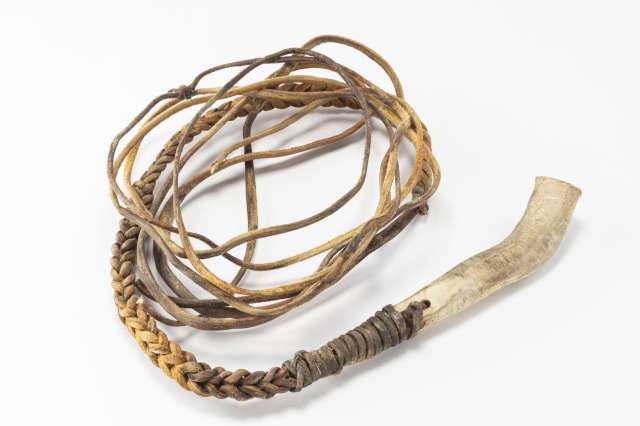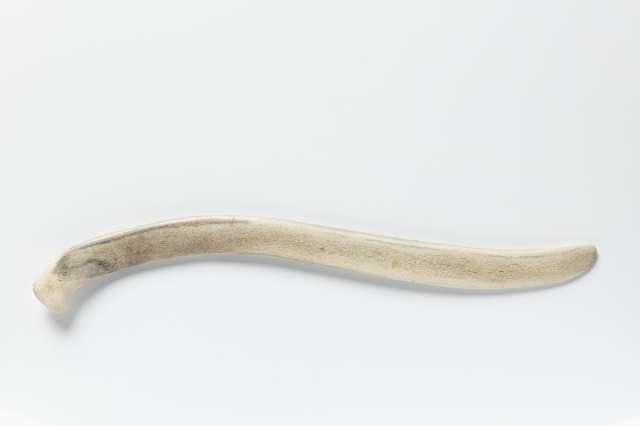Whip (ipirautaq)
A whip (ipirautaq) was used to direct sled dogs, called qimmiit, when they failed to respond to spoken commands. A simple, threatening crack of the whip would guide, encourage, and discipline them.
The caribou-antler handle (ipu) was attached to the part of the whip called a kangiq — a long braided rope of walrus-skin. This fearsome tool required much dexterity from its user. The rope, called an iparaq, could vary in length from one whip maker to another. It had to be long enough, however, to reach the lead dogs at the front without the man being forced to get off the sled, called a qamutiik. A woman might also use a whip to chase dogs away and to keep them from getting too close to men cutting up a game animal.
Nowadays, whips are still used by Inuit who travel by dog team. They're generally made of bearded-seal skin with a wooden or caribou-antler handle.


